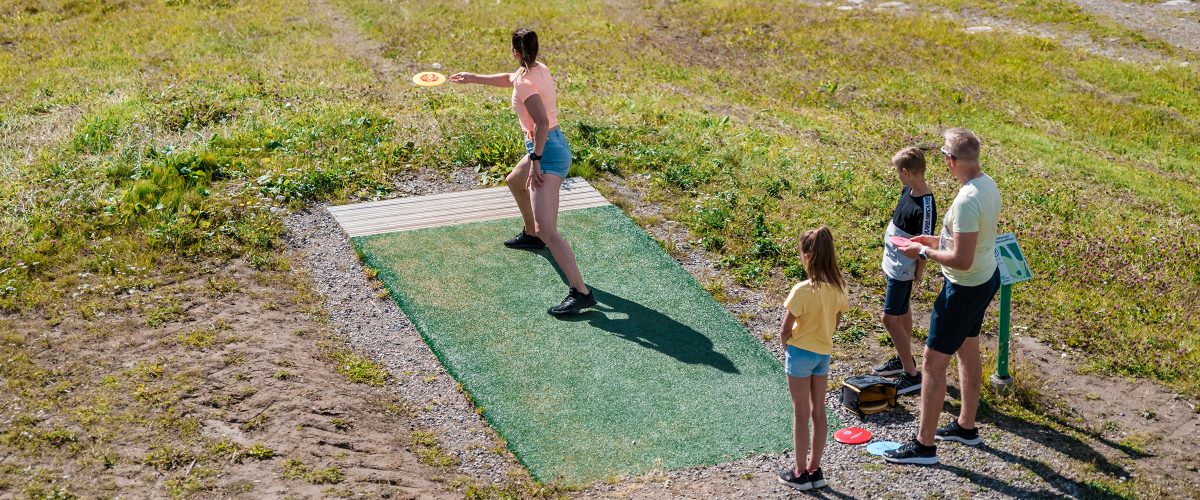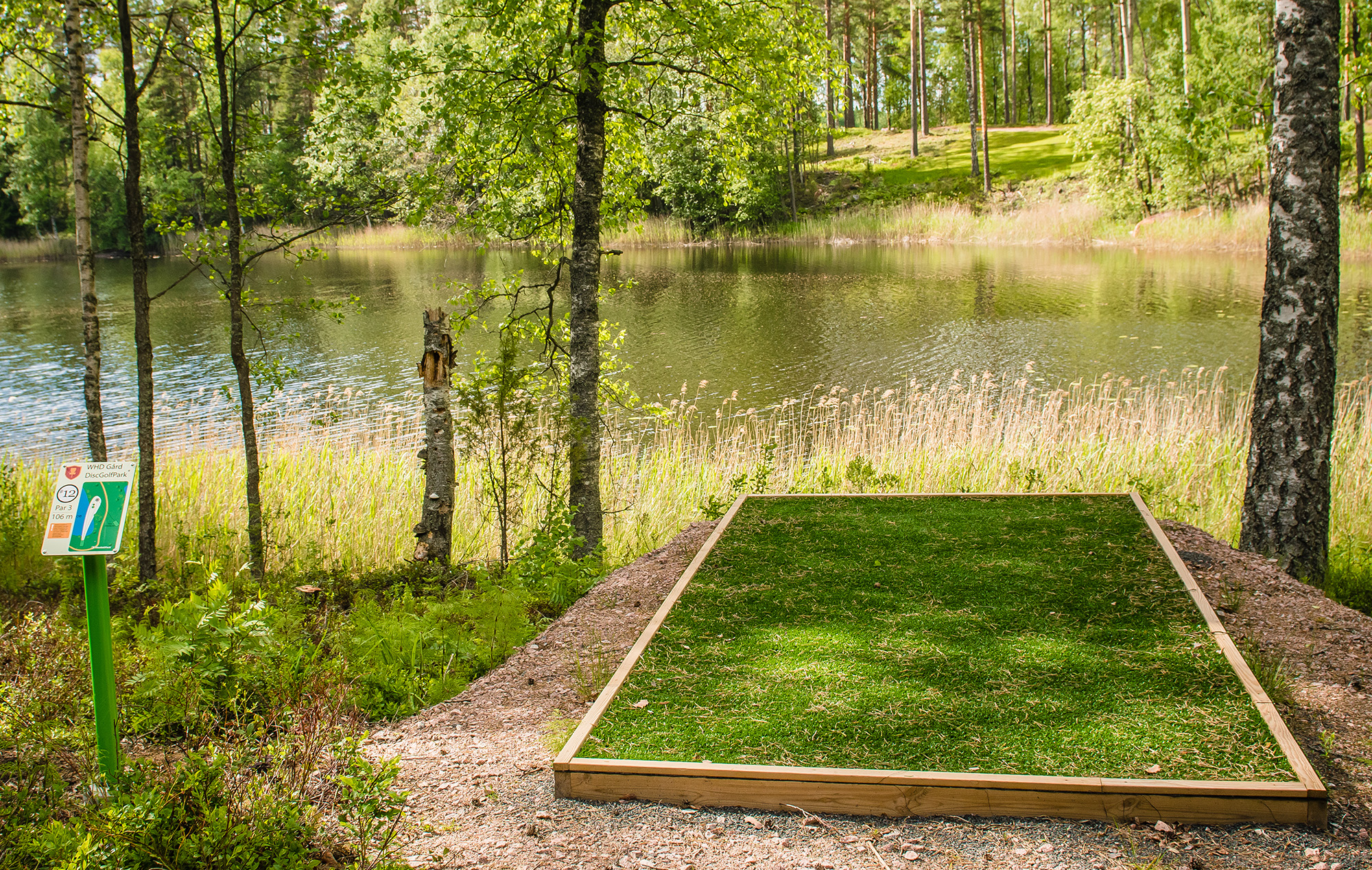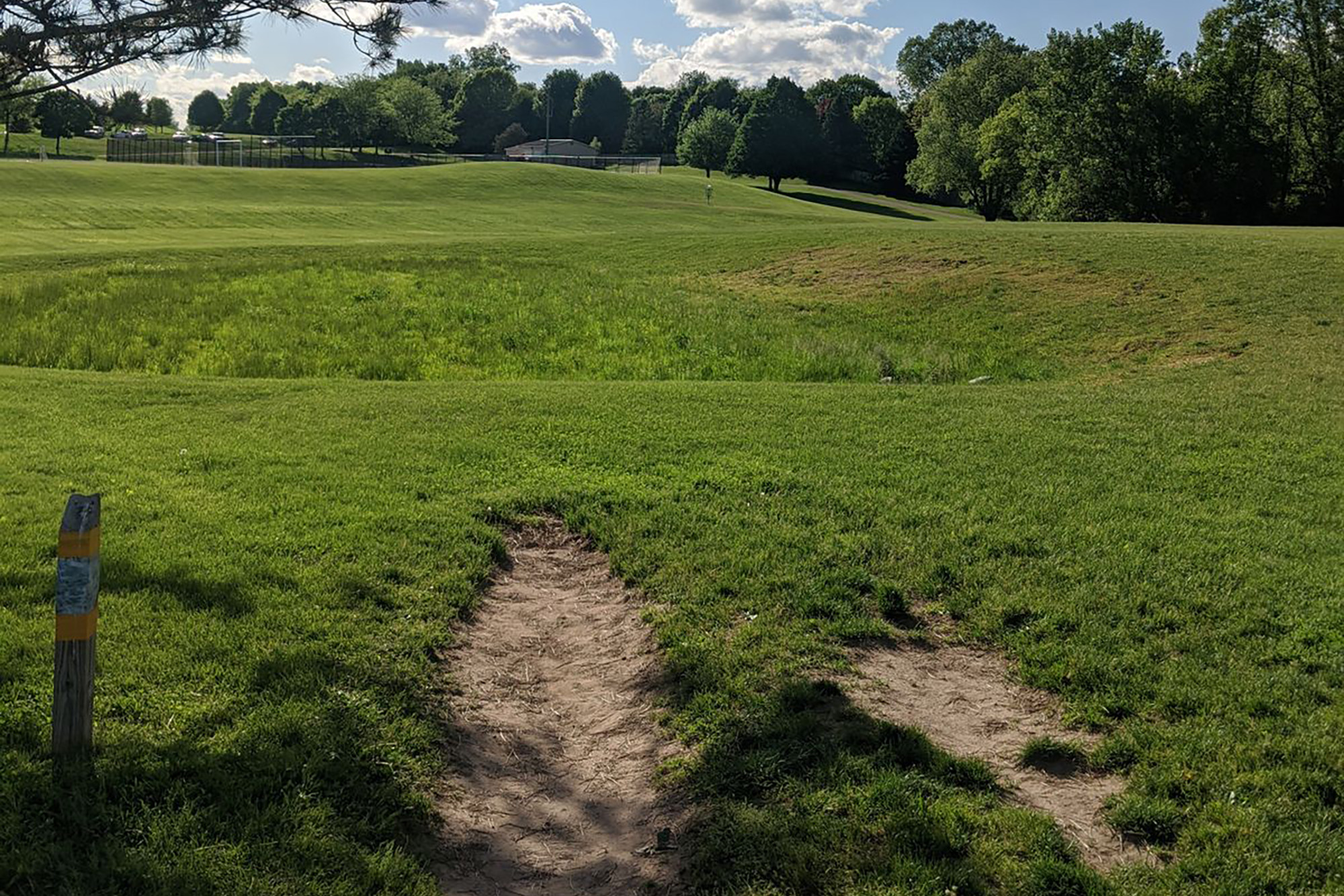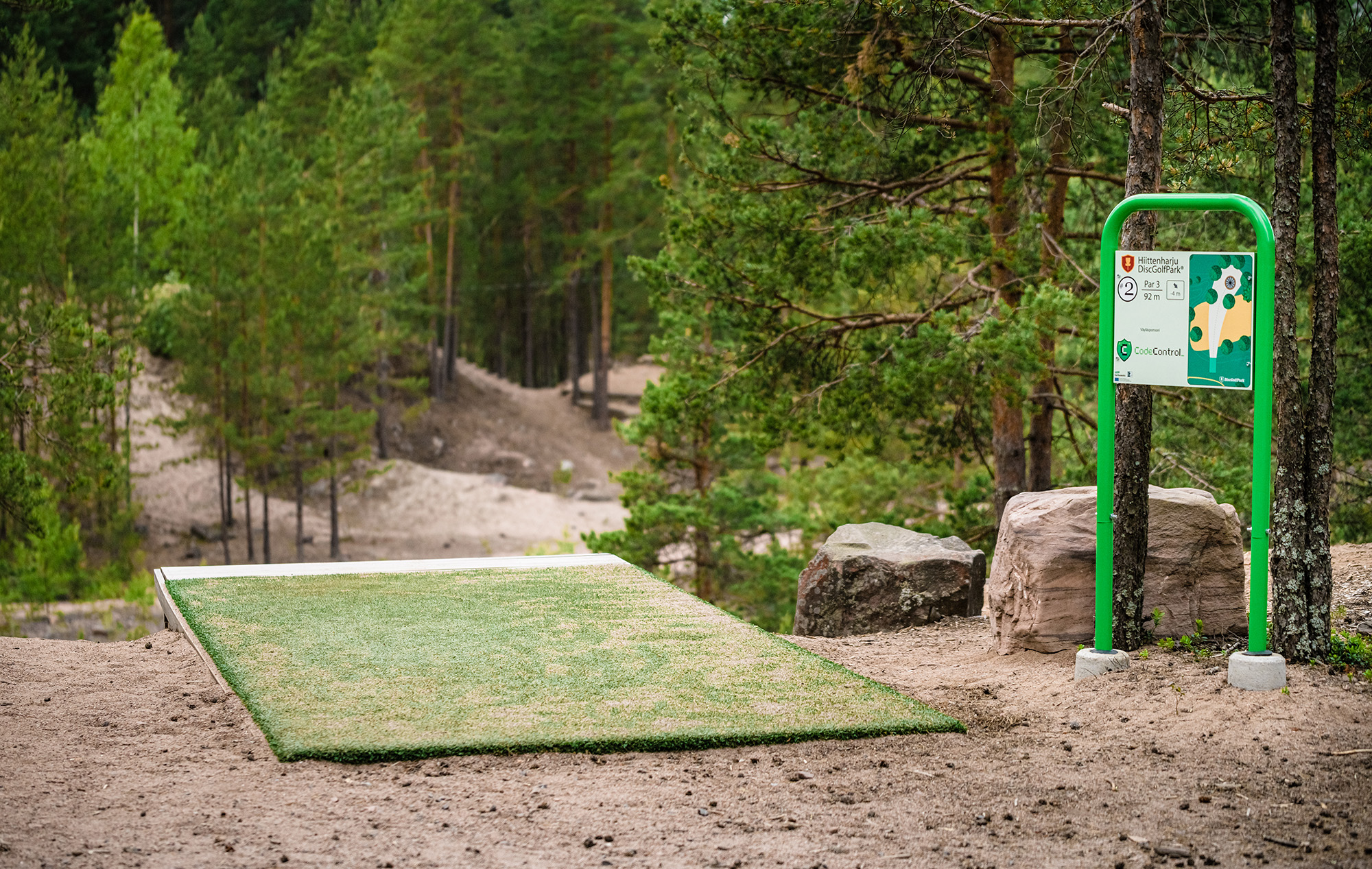Why Your Disc Golf Course Needs Tee Pads

The simplicity of building disc golf courses is a big part of their appeal. For instance, when experienced disc golf course designers work in fairly open areas of city parks, it’s easy to design courses that require virtually no new landscaping.
Still, constructing a fun, safe disc golf course can’t be done effortlessly, and there are three things course builders must install to create a high quality facility: disc golf targets, tee signs, and, of course, tee pads.
Of those three, tee pads take the most work and time – which is why it can be tempting to leave them out and just have players throw tee shots from dirt or grass. But our long years in the course building business have shown us that permanent tee pads are necessary for safety, environmental protection, and player enjoyment.

What is a disc golf tee pad?
A disc golf tee pad is where every player begins a hole. Tee pads are typically rectangular, and we recommend they be a minimum of 4.5 feet x 7.5 feet/1.5 x 2.5 meters.
When disc golfers hear ”tee pad,” they think of a permanent, durable surface such as artificial turf, concrete, or bricks/paving stones.
Tee pads make disc golf safer
When throwing any significant distance, disc golfers usually take a ”run-up” before transferring most of their body weight into their lead foot and rotating on it to make their disc fly down the fairway.
To see what we mean, pay close attention to the feet of pro disc golfer Eagle McMahon in the video clip below:
Teeing areas are the only places on courses that have to stand up to these motions from every disc golfer who plays them. Additionally, tees usually endure very powerful footwork as players try to throw their discs as far as possible on their first throws on a hole.
Well-installed permanent tee pads can stand up to this punishment for years and years while continuing to provide even, stable footing. Natural tees, however, deteriorate rapidly.
The constant run-ups and foot rotations quickly turn grass or dirt teeing areas into rutted, uneven surfaces where turned ankles, big slips, and even worse accidents are very likely – especially in wet conditions.

A photo from UDisc’s course directory showing ruts that have formed at a natural teeing area on a course in Michigan.
Tee pads make disc golf more environmentally friendly
As we talked about in the last section, teeing areas are used over and over again during powerful disc golf throws. When these areas have no tee pads, patches of bare, tightly-compacted earth quickly form.
Studies have shown that compaction makes most soils worse at retaining water. The result is increased run-off and erosion.
When those grassless, compacted patches turn to mud in wet conditions or become too uneven to play safely, players naturally start using adjacent areas that are still flat and grassy, literally widening the scope of the problem.
Tee pads eliminate the issue of ever-spreading soil compaction and erosion resulting from disc golf tee shots. They give disc golfers specific, safe places to throw from, sparing the neighboring grass and soil from trampling and compaction.

Disc golfers prefer courses with tee pads
The company UDisc runs the world’s largest disc golf course directory, and they recently released stats showing which teeing surfaces are most common.
According to UDisc, around 50% of courses worldwide have permanent tee pads while a little over 40% use grass or dirt (some tee types in the directory aren’t labeled, so the numbers don’t add up to 100%). While that mix is pretty even, it’s not the end of the story.
In the same publication, UDisc showed what sorts of tee pads are most often found at well-rated courses, which they defined as courses with a minimum average rating of four out of five stars.
The numbers changed drastically.
In both the 10 U.S. states and three European countries with the most disc golf facilities, an average of around 80% of well-rated disc golf courses have permanent teeing surfaces.
Since UDisc’s course ratings are aggregates of scores from everyday disc golfers, these stats show that players clearly prefer courses that have permanent tee pads – not surprising, really, given what we know already. Players feel safer when there are permanent tee pads, and not having uneven, bare dirt patches at the start of every hole makes courses more aesthetically appealing.
The point of building a disc golf course is for it to be played, and the more people like a course, the more they’ll play it. The importance of ratings on platforms like UDisc also shouldn’t be underestimated. Well-rated courses are more likely to catch the eyes of disc golf tourists hoping to get a round in while vacationing or looking for a weekend road trip destination.
Don’t cut corners – build tees
Disc golf is an accessible, healthy, safe activity for all ages. But, like with most anything, cutting corners when building a disc golf facility can cause problems later on.
When it comes to tee pads, concerns over time investment, labor, and the bottom line on the front-end of course construction make it easy to overlook that not including them can harm players, ecosystems, properties’ aesthetic appeal, and a course’s popularity in the long run.
DiscGolfPark’s turf TeePads, which are typically laid over a gravel base and attached to a wooden frame, offer a durable, safe teeing solution that’s still in tune with the beautiful natural areas where disc golf is most often played. They’ve proven themselves over and over again at many of the best disc golf courses in Europe and North America. That includes the world’s best free disc golf course (Faylor Lake in Pennsylvania) as well as 2023’s #10 disc golf in the world (Kippasuo Pro in Finland).
But whether it’s our TeePads or another option, permanent tees should always be a part of a permanent disc golf course. Feel free to get in touch, and one of our course building experts will be happy to help you find the best solution for your community’s disc golf course.
